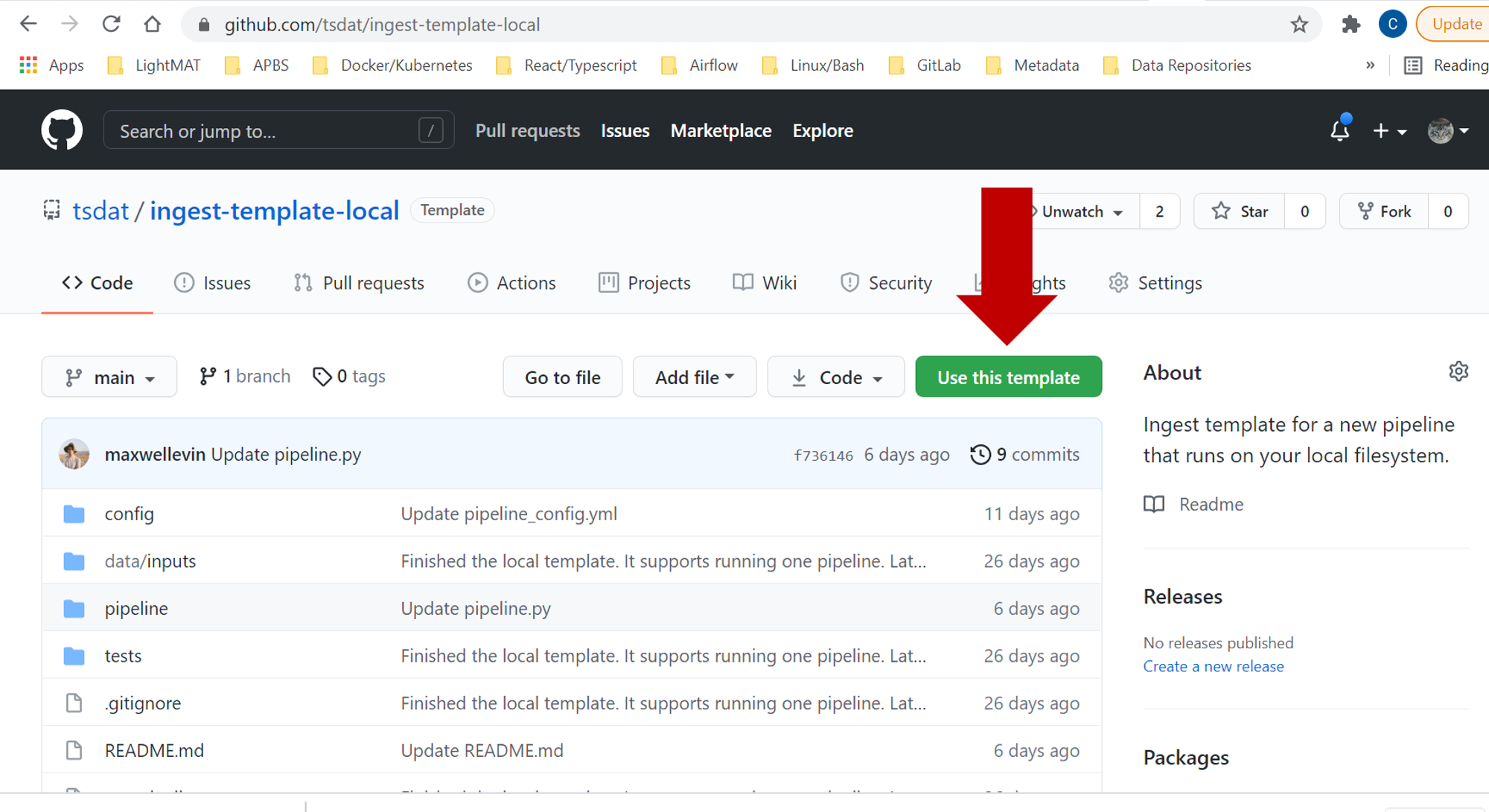Getting Started
To get started developing a tsdat pipeline, we suggest following the following steps, which are explained in more detail in the linked sections:
Prerequisites
Tsdat requires Python 3.8+
Installation
You can install tsdat simply by running:
pip install tsdat
in a console window.
Developing a Tsdat Pipeline
The recommended way to set up a Tsdat pipeline is to use a GitHub repository template. You can find a list of template repositories for tsdat at https://github.com/tsdat/template-repositories.
-
Use this template to run pipelines on your local computer.
-
Use this template to run pipelines on AWS. (It requires an AWS account.)
Once you have selected the template to use, select the “Use this template” button to create a new repository at your specified location with the template contents.

Once you have created a new repository from the template, you can clone your repository to your local desktop and start developing. By default, the repository template will come pre-configured to run out-of-the-box on an example dataset.
See the pipeline template tutorial walkthroughs for how to set up each of these templates.
See configuring your pipeline for more information on tsdat-specific configuration file and code customizations. In addition, make sure to read the README.md file associated with your template for any template-specific instructions.
Running Your Tsdat Pipeline
Once tsdat is installed and your pipeline template is configured, you can run it locally on your input data from a terminal window at the top level of your repository. To see the full list of commands, run:
python runner.py --help
For detailed examples of how to set up and use tsdat, consult the Tutorials and Examples section.